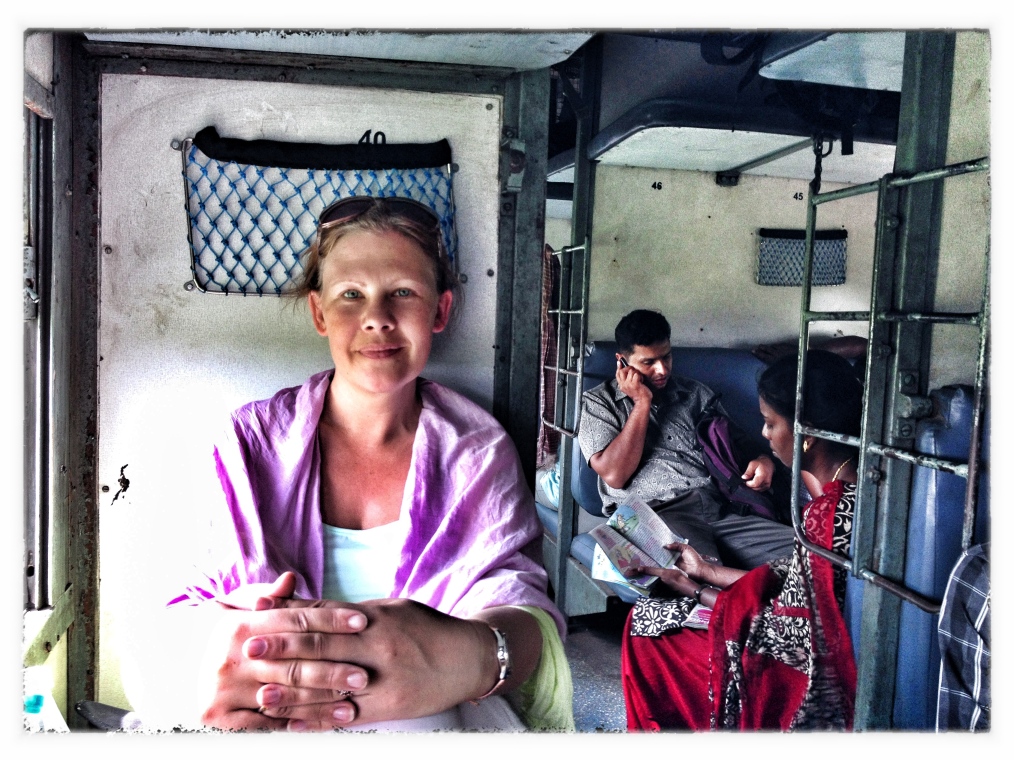Everyone says the same; everywhere on the internet says the same, and the whole world seems to be in agreement that rail travel in India is so, so difficult. Now don’t get me wrong, there are times when it is confusing, times when it is uncomfortable and there are times when it is downright harrowing. It’s just not as bad as people say.
Let me walk you through the system, such as it is.
Indian rail travel( like society) is divided up into several different classes. There are second class general tickets, where you simply have a chair in a non air conditioned carriage. There are air conditioned seat carriages which of course is a step up. Then there are sleepers which start as second class non-AC, these are bunks three high, (one in the middle folds into a backrest between 6am and 9 pm), no AC, no curtains, no plugs.
The next step up is second class sleeper, AC, three bunks high, and then second class, AC, two bunks high. Here you have conductors who take care of the carriage, you get blankets and sheets, laptop and telephone plugs, there are curtains and even wall holders for your water bottles.
First class is very like the second class AC sleeper but includes all meals, a lockable door and has a barrier between you and the rest of the train in the form of another locked door.
There are no cafe cars as there are plenty of people selling all manner of food and drink through the windows at each station. You can get anything from water to chicken biriyani.
Now the buying of the tickets. There are several ways to do this: You can pay a taxi driver or a travel agent to do it, you can go to the station and queue up at the windows just like everyone else or you can go to the reservations office in the town you are in and go to the window which deals with foreign tourists. The first option costs maybe 100 rupees (£1.15) extra and is very easy and almost cheating, but hey, we did it a couple of times, cheat if you can!
If you just go to the station on the day and hope for the best, you will get general second class tickets, which of course can be upgraded on the train to any seat which is available, the conductor is your man for this!
The last way means you have to go to the reservations office, often right outside the station and book at least a day ahead, expect brisk efficient service, expect to be asked for photocopies of your passport if you are making use of the special tourist quota tickets. Within an hour you should hopefully have your tickets!
Remember that as a foreign tourist you have it great, think of this when paying foreigner price at a temple. You have special windows with shorter queues, you have a special foreign tourist quota on many trains which means you can jump even more queues and you have hundreds of willing helpers, some of whom can even speak English.
Some people don’t know they’re born.
Now finding the train, and your seats. The first time you travel by train you will need people to help you, and people will be only too happy to help you, but with time you will find that there are actually departures lists put up at the station, there are signs which correspond to numbers on your tickets and there will be printed lists on the outside of your carriage with your names on. All the trains have a unique number, it’s on your ticket and on the platform signs. There is a functioning system it just takes time to discover it.
We traveled 13 hours in second class non AC. It was chaotic, people hopping from bunk to bunk, showing up for a short time then getting off and new people getting on. Chaotic it was and I have been more comfortable, but it really was not that bad, at 9pm everyone lies on their bunks and the carriage sleeps, it really was fine. A non AC seat for this journeys cost 342 rupees (£4)for two, the non AC sleeper cost 692 rupees (£8) for two(upgraded on the train).
Our next journey was twelve hours and so was comparable, we took AC second class sleeper, two tier. This was fine, better than anything yet; curtains, sheets, luxury. Guys are constantly coming round selling all sorts and you can get a thali (complete Indian meal) from the carriage guard for 80 rupees (£0.92).The ticket for two set us back about 2500 rupees (£29).
We sat in first class for a while on the 13 hour journey and that was similar but more refined than second class AC with lockable doors and full board, but would have cost nearly 4592 rupees (£53) for the 13 hour journey.
Second class AC two tier all the way for us but whichever class you choose do not underestimate the massive distances involved on the subcontinent, journeys can easily be 20 hours or more so choose wisely. If you want to try the general class, where people do hang out of the doors as the train rolls, don’t go long distance with this, an hour will give you the experience you desire.
The whole point of this is; get out there while in India and travel the trains, it’s really not that hard! I wrote this on a 17 hour, second class AC train to Rajastan.
Easy!
Lucien Grey

Pingback: URL